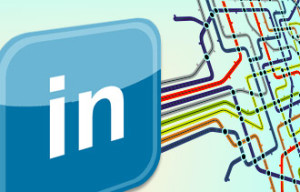 Having a strong LinkedIn network is very beneficial to your professional career. It can help you land a job, learn new things and make new connections that you never thought would be possible. Although many professionals have a LinkedIn profile, many are still not taking full advantage of the social network. The following are three proven ways to grow and enrich your network on LinkedIn:
Having a strong LinkedIn network is very beneficial to your professional career. It can help you land a job, learn new things and make new connections that you never thought would be possible. Although many professionals have a LinkedIn profile, many are still not taking full advantage of the social network. The following are three proven ways to grow and enrich your network on LinkedIn:
1. Go to Events & Take People for Coffee (Add people in the moment)
The most fundamental way to grow your LinkedIn network is also the most old school, but going to events gives you a chance to meet unique individuals with many different backgrounds. Instead of bombing out random add requests on LinkedIn, make real human connections first, before adding anyone. Once you’ve made the initial interaction, consider taking the new connection for coffee. Even if the individual doesn’t work in your field, bring a list of random questions as there is still likely something to be learned or another networking opportunity may present itself. An under-utilized strategy for events and coffee meetings is bringing out your smart phone and adding people with the LinkedIn app on the spot. That way you won’t forget, or have to remember cards or emails.
2. Engage with Your Network (comment, like, share, endorse or recommend)
Similar to all other social networks, you cannot expect anyone to engage with you if you aren’t engaging first. More active members of your network will likely share original composition posts which are great for commenting on with your thoughts, or sharing the post with your network. These posts will allow you to get your profile out to more people, in a shorter amount of time. Less active networks will share trending articles, memes, videos or inspirational messages and liking or commenting on these types of posts will show your support for the author but it can also open up the opportunity for other LinkedIn members to see your profile and connect. If you’ve worked directly with a connection for some time, consider endorsing one or a few of their skills and if you’d really like to show your support, write a personal recommendation. These are all ways to ensure your profile stays active and relevant.
3. Share Original Content
Once you feel comfortable with the size and engagement of your network, it’s time to start
sharing original content. The best way to share your ideas is with LinkedIn’s publisher feature. Don’t focus on the length so much as the content on the page. Write about topics you have first hand experience in and do your best to provide real world value that can be applied by anyone who has the drive. Adapt your content overtime as you may notice that some topics tend to be more popular than others. Interviewing a colleague or friend is a great place to start if you can’t come up with any unique ideas to write about. If you already have some writing experience, you can use these posts to showcase your knowledge, expertise or unique skills, all of which will show well to your network.
In a world where “who knows you” is often more important than “who you know” growing and enriching your LinkedIn network can take you a long way professionally. With a few simple steps, you’ll see your network grow exponentially and over time the engagement will increase and the possibilities for the future will be endless.
“There’ll always be serendipity involved in discovery.”
– Jeff Bezos


 Since its inception around a decade ago, Facebook has grown and evolved into something far bigger and far different to anything the creators could ever have imagined.
Since its inception around a decade ago, Facebook has grown and evolved into something far bigger and far different to anything the creators could ever have imagined. Do you write a blog for your business? Have you ever wondered how to get more exposure for your blog and/or website? Do you want to expand the reach of your message? For the sake of your marketing strategy and growing your business you should have answered ‘yes’ to all of these questions. That’s why it’s worth learning more about Pulse, which is LinkedIn’s Publishing platform.
Do you write a blog for your business? Have you ever wondered how to get more exposure for your blog and/or website? Do you want to expand the reach of your message? For the sake of your marketing strategy and growing your business you should have answered ‘yes’ to all of these questions. That’s why it’s worth learning more about Pulse, which is LinkedIn’s Publishing platform.












